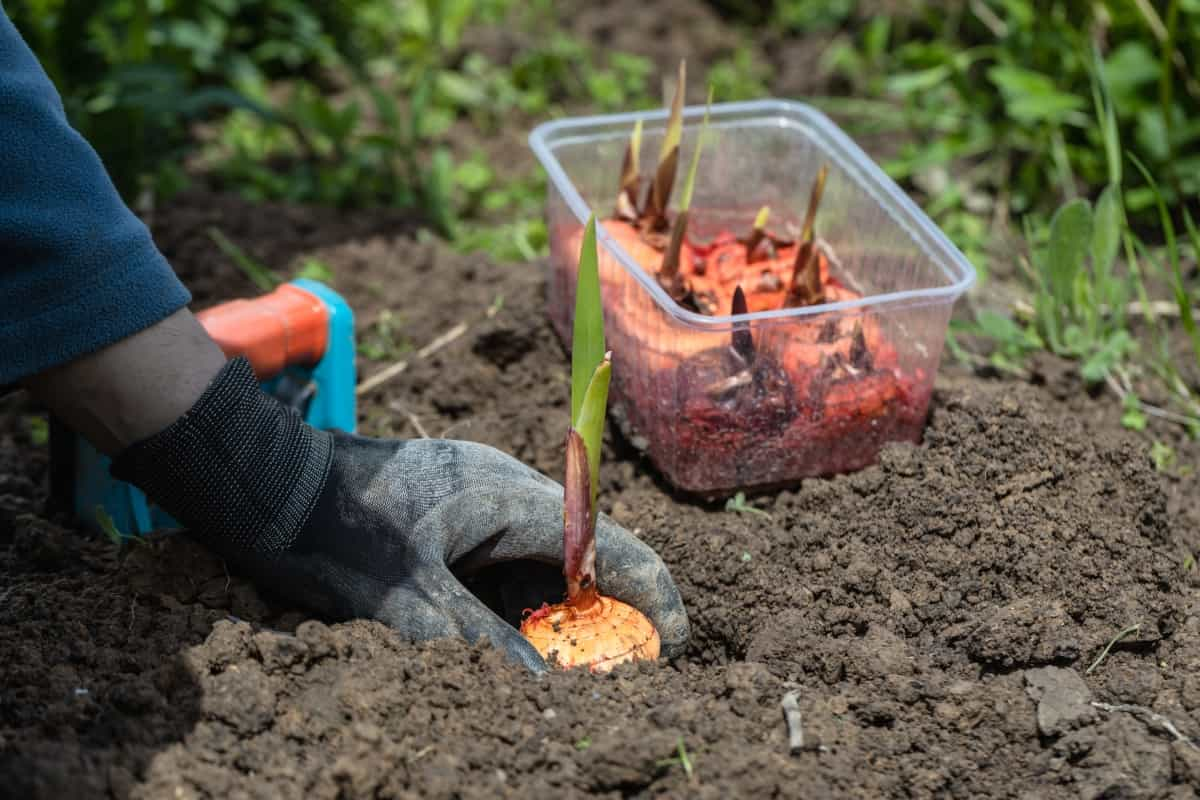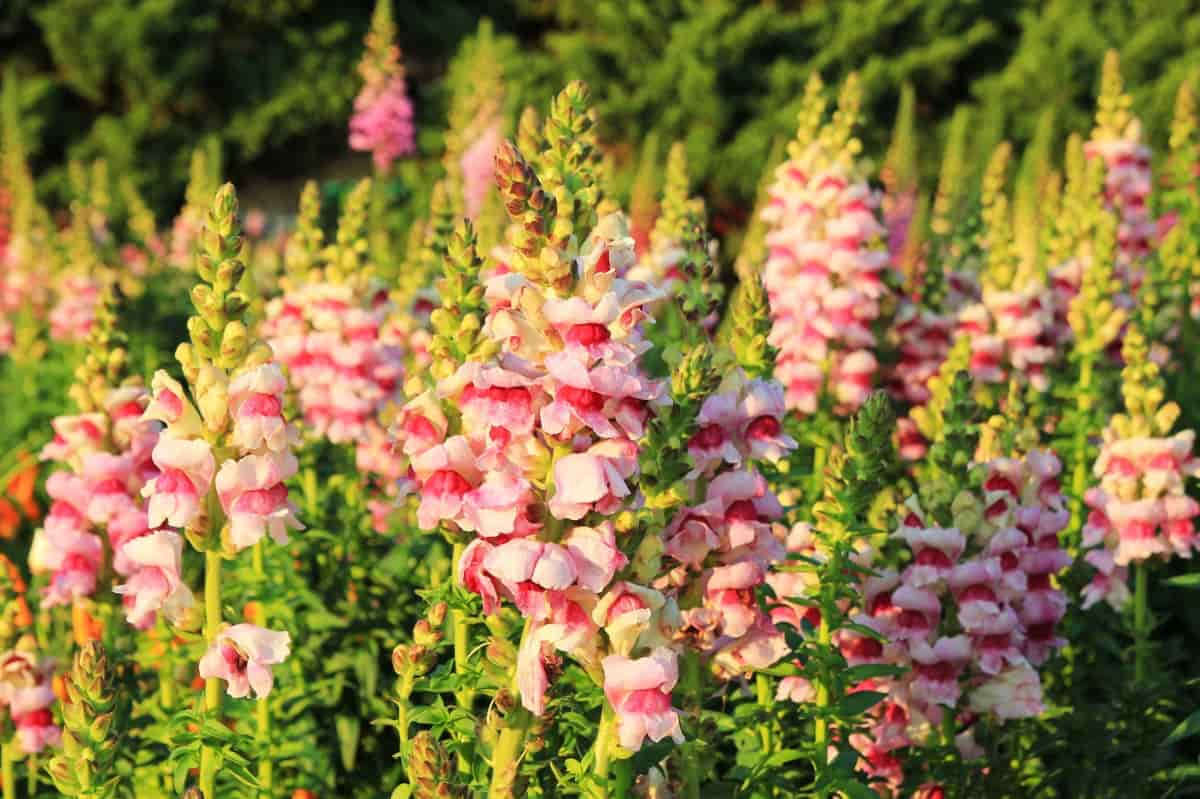Gladiolus is a popular and beautiful flower that adds color and charm to any garden. The plants are native to sub-Saharan Africa and are widely cultivated for their showy flowers, often used in flower arrangements. The plants grow from corms with sword-shaped leaves up to 4 feet long.

The flowers are arranged in a spike and can come in various colors, including red, pink, orange, yellow, and white. Gladiolus flowers bloom in the summer and can last for several weeks. If you are a beginner and want to grow gladiolus, here are some instructions to help you.
How to Grow and Care for Gladiolus
Best Soil Conditions for Growing Gladiolus
A well-draining soil with high organic content is ideal. Plants generally tolerate soil of lesser quality, but sandy loam is best, with a pH between 6.0 and 6.5. Test your soil and amend accordingly, using materials such as compost for nutrient additions and acidity, lime for acidity reduction, sand for drainage, and sphagnum peat for acidity increase, according to your local agricultural extension services.
How to Plant Gladiolus Bulbs in the Ground
- Choose a sunny location with well-draining soil. Gladiolus bulbs prefer full sun and soil that drains well to prevent water logging.
- A hole about 6 inches deep should be dug in the soil. To provide nutrients to the bulbs, add compost or well-aged manure to the bottom of the hole.
- The pointed end of the gladiolus bulbs should face up in the hole. Allow enough room for the bulbs to grow by spacing them about 6 inches apart.
- Remove air pockets by gently tamping the soil back into the hole.
- After planting, water the bulbs thoroughly to help them settle in and grow.
- For better moisture retention and weed suppression, mulch around the bulbs with straw or shredded leaves.
- As the gladiolus plants grow, they provide consistent moisture and fertilizer to encourage healthy growth and blooming.
Growing Gladiolus in Containers: Step-By-Step Guide
- Take a container 12 inches deep and wide enough to accommodate the bulbs you want to plant.
- Fill the container with a potting mix, leaving about 2 inches of space from the top. Mix in some compost or slow-release fertilizer for added nutrients.
- Plant the gladiolus bulbs about 4-6 inches deep with the pointed end facing up. Space the bulbs about 4-6 inches apart for proper growth.
- Water the container thoroughly after planting, and then keep the soil moist but not waterlogged. Fertilize the bulbs with a high-phosphorus fertilizer every two weeks to encourage blooming.
- As the plants grow taller, they may need support to prevent them from falling. Insert stakes or trellis in the container and tie the stems to them using soft twine or plant ties.
- Look for common pests like spider mites and thrips, and treat them promptly with insecticidal soap or neem oil. Also, watch for signs of diseases like fusarium wilt or bulb rot, and remove any affected plants immediately to prevent the spread.
- When the flowers start to fade, gently remove them from the stem to prevent seed formation. After the first frost, carefully dig up the bulbs and store them in a cool and dry place for the winter.
Watering Tips for Healthy Gladiolus Plants
- Keep gladiolus plants well-watered with at least 1 inch of water weekly. This amount has to increase during periods of drought or if you’re growing in raised beds.
- When watering gladiolus plants, it is best to water at the base of the plant rather than from above. This helps prevent water from sitting on the leaves, which can lead to disease.
- Watering in the morning allows the Gladiolus plants to dry off during the day, reducing disease risk.
- A soaker hose is a great way to ensure consistent moisture while avoiding overwatering. These hoses deliver water directly to the soil, reducing the risk of water sitting on the leaves.
In case you missed it: How to Grow and Care for Cosmos Flowers: Planting Instructions for Beginners

Fertilizing Gladiolus: When and What to Use
- Compost: Compost is a great organic fertilizer that can be added to the soil before planting or used as a top dressing around the base of the gladiolus plants.
- Bone Meal: Bone meal is a good phosphorus source, which is important for flower production. It can be added to the soil at planting time or sprinkled around the base of the plants when they begin to produce flower spikes.
- Fish Emulsion: Fish emulsion is a liquid fertilizer from fish waste. It is high in nitrogen, important for strong, healthy foliage. It can be used as a foliar spray or as a liquid fertilizer for the soil.
- Blood Meal: Blood Meal is a fast-acting organic fertilizer high in nitrogen. It helps to promote leaf growth and overall plant health. It should be mixed into the soil before planting.
Protecting Gladiolus from Pests and Diseases
Regularly inspect your gladiolus for signs of pests such as aphids, spider mites, and thrips. These tiny insects can cause significant damage to your plants if left unchecked. To control them, you can use insecticidal soap or neem oil, which are effective and safe for use on gladiolus.
Start by selecting healthy bulbs from a reputable source. Look for firm, plump bulbs and free of any signs of damage or disease. Avoid planting gladiolus in areas where other plants have suffered from fungal diseases, and remove any infected plant material immediately. Common gladiolus diseases include botrytis blight, fusarium wilt, and rust. If you notice any signs of these diseases, remove the diseased plants and dispose of them properly to prevent the spread of spores.
Pruning Gladiolus Flowers for Optimal Growth
- Cut off the spent blooms: The first step in pruning your gladiolus flowers is to remove the spent blooms. It controls the plant from wasting energy on producing seeds and redirects it toward new growth.
- Cut back dead or damaged foliage: If you notice any dead or damaged foliage on your gladiolus plant, cut it back to the base of the stem. This will prevent disease and pests from spreading to healthy parts of the plant.
- Remove side shoots: To encourage larger blooms, you can remove any side shoots growing on the main stem of your gladiolus plant. These shoots can divert energy from the main flower, resulting in smaller blooms.
Supporting Gladiolus Stalks to Prevent Bending
- Supporting gladiolus stalks is by using stakes. Stakes are vertical rods made of bamboo or wood driven into the ground next to the plant. The stalks are then tied to the stakes using soft ties such as twine or plant clips.
- Support gladiolus stalks by using cages or trellises. These are structures made of wire or metal that are designed to provide support to plants. The cages or trellises can be placed around the plant, and the stalks can be trained to grow through the openings.
- Provide support to the gladiolus stalks early on before they start to bend. Once the stalks have already started to bend, it may be difficult to straighten them out without damaging the plant. Therefore, it is recommended to start providing support as soon as the stalks reach a height of around 12 inches.
Harvesting Gladiolus Blooms at the Right Time
Cut gladiolus stalks when the bottom two or three flowers start to open. If you keep the bulbs for next year, let four leaves remain on the plant. Harvest the stems with a sharp knife early in the morning and put them in a bucket of tepid water. After you arrange the flowers indoors, cut another inch off the bottom of the stalk every few days and remove fading blooms.
Overwintering Gladiolus Bulbs for Next Season
- Once the foliage has turned brown, carefully dig up the bulbs using a garden fork or shovel.
- Shake and loosen excess soil and remove any dead or damaged leaves. Cut the remaining foliage to about an inch above the bulb.
- Allow the bulbs to dry in a warm, dry place for about a week. This will help to prevent rot during storage.
- Once the bulbs are dry, remove any remaining foliage and place them in a cool, dry location. A garage, basement, or closet are good options.
- Store the Gladiolus bulbs in a paper bag or cardboard box filled with peat moss, vermiculite, or sawdust.
In case you missed it: How to Grow and Care for Dahlias: Planting Instructions for Beginners

Conclusion
By following the above easy steps, you can enjoy beautiful Gladiolus flowers in your garden every year. Remember to keep the soil moist, fertilize regularly, and harvest the flowers at the right time to ensure healthy growth and blooming.
- Ultimate Guide to Ossabaw Island Hog: Breeding, Raising, Diet, and Care
- Ultimate Guide to Juliana Pig: Raising Facts, Size, Diet, Care, and Lifespan
- Raising Lleyn Sheep: Disadvantages, Price, Uses, Characteristics, and Care
- Ultimate Guide to Meishan Pig: Breed Facts, Breeding, Raising, and Care
- Ultimate Guide to Teacup Pigs: Raising, Diet, Lifespan, Cost, and Care
- Guide to Raising Poll Dorset Sheep: Facts, Profile, Characteristics, Uses, and Care
- Ultimate Guide to Bighorn Sheep: Characteristics, Diet, Lifespan, Breeding, and Lifecycle
- Ultimate Guide to Raising Katahdin Sheep: Farming Facts, Breed Profile, Uses, and Care
- Ultimate Guide to Raising Oreo Cows: Belted Galloways Farming Facts, Profile, Uses, and Care